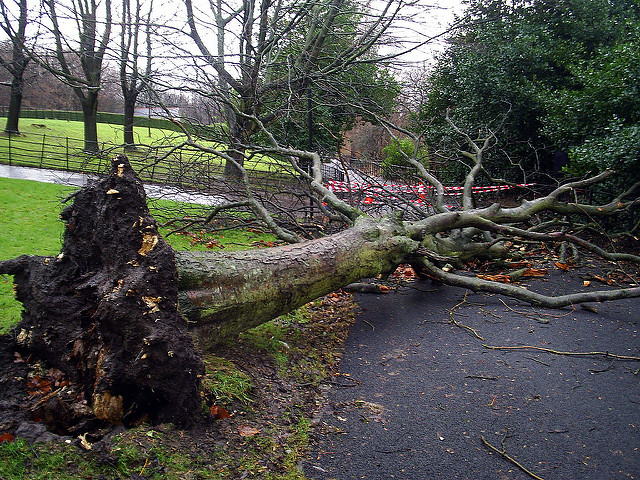Damage caused from a storm is a very frustrating reality that can happen to anyone. One of the most common ways in which a storm can do damage to your property is by directly damaging trees situated around your home. If a tree becomes damaged from a storm, there are several things you can do to ensure that you save part of the tree instead of losing the entirety of it.
Safety Precautions Are Essential
When handling a tree that’s become damaged by a storm that recently passed through, it’s important that you take some basic safety precautions. For instance, it’s essential that you survey the surrounding area. Look at the ground near the tree to assess if any power lines have fallen, and then take a look up to identify if any damaged tree branches are about to fall. This will allow you to avoid potential hazards while you get to work. If you notice any dangling or loose limbs, stay away from these while working. It’s also recommended that you don’t use a chainsaw for the removal of limbs, as improper use of this machine can be very dangerous.
Fix Bark That’s Been Torn
The health and appearance of a tree that’s been damaged by a storm can be greatly improved by repairing any torn bark that’s present. This is a very important task after a storm has done damage to your tree, as exposed bark provides perfect hiding places for insects of all kinds. A sharp knife should be enough to smooth over any edges that are found around the tree. During this task, make sure to avoid cutting through any of the greenish portion of the bark, as this area provides nutrients to the tree.
Remove Broken Branches
The most important aspect of fixing any tree once a storm has come through and damaged it is to remove any broken or weakened branches on the tree. There are different ways in which to do this depending on the size of the broken or damaged branches. This is necessary, no matter the size of the branch, due to the fact that decay occurs much quicker in a tree when damaged branches are left where they are. Smaller branches should be pruned at the spot where they meet a larger branch, while larger branches should be cut down to the trunk. A hand saw is useful for such scenarios.
Avoid Damaging the Tree Any Further
In order to ensure that your tree recovers from the damage caused by the storm, it’s necessary to do what you can do avoid damaging the tree any further. First, don’t prune too much of the tree. Initial repairs and fixes won’t automatically make your tree appear 100 percent healthy. If you simply repair what’s necessary, the tree will actually heal on its own quite quickly. You also don’t want to top the tree. The act of cutting the entirety of large branches from the top of a tree only leads to the development of weaker branches that are more likely to become damaged when the next storm rolls around. The strength at the top of a tree is also essential in the recovery phase after a storm, which is why topping shouldn’t be done.
If you’re interested in tree trimming or stump removal try out Scottsdale Tree Trimmers. They are a full service cactus, tree, and stump removal company who have been around for years!



